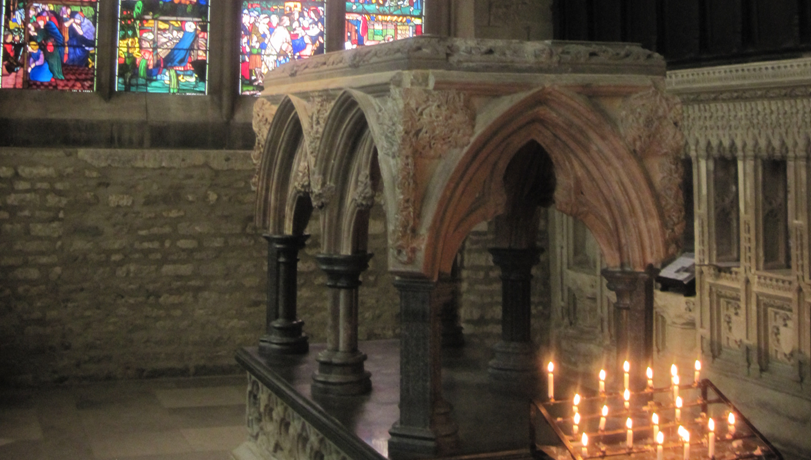 |
| St. Hildegard instructs her nuns. |
St. Hildegard is one of the most interesting writters from the twelfth century. Her many works of philosophy, music and her acount of her revelations are remarakable as the writtings of a benedictine nun. Women had written through the early middle ages but by the twelfth and thirteenth centuries most surviving works are written by males. Hildegards work, however, should not be judged either positively or negitively based on her gender; her writtings are magnificent and important as the work of any human being and her message is key to the mission of the Holy Church. Hildegard was born in 1098 A.D. It was at the age of three when she began to experience visions which continued throughout the rest of her life. At a young age went to a forest to be educated by the visionary and hermit, Jutta. It was with Jutta that she learned to read, write and read and play music. In 1136, after several years of study, Hildegard became the Abbess of the Benedictine Abbey of Diessenberg. In 1147, Hildegard received approval from the Archbishop of Mainz and from Pope Eugenius III to document her visions. In 1150, she moved her growing community to an abbey at Rupertsberg near the city of Bingen. There she founded and reformed several abbeys, including the Abbey at Eibingen, where her community and relics survive to this day. Her works were many; she wrote three books on her visions which were widely celebrated during the middle ages. She wrote several books in the sciences including those of natural cures and several on theology and music. Hildegard's music is liturgical but she also composed poems and a morality play. Hildegard identified herself as a theologian for her commentaries on the Gospels and creeds and on the lives of saints. Towards the end of her reign as Abbess, she allowed an excommunicated man to be buried in consecrated ground. When priests ordered the body to be removed, she told them that this would be a sin because the man had reconciled himself with the Church. For this, Hildegard and her community were placed under an interdict until the Archbishop heard her argument. After her death on September 17 in 1179 miracles were reported at her tomb; she has been venerated at Eibingen ever since.
Hildegard's message resides in monasticism or at least in the principles of monastic life. Monasticism is not common in the Anglican Communion but it is more common that most people think. Hildegard led a life of life of contemplation devoted to Christ, work, and Christ's work. You do not have to be a monk or nun to live the message of Hildegard: that the important thing in your life is to be devoted to Christ, to see him in your work, and to do his work. Some of us see work only as the job; the work that "keeps a roof on the house" or "food in the refrigerator" or maybe just something to keep us distracted. The work of a religious is restricting; it keeps us from many human things and what some might see as 'normal life.' But a work that is meaningful; that instead of keeping us distracted, keeps us always looking towards Christ; that keeps us doing Christ's hard work; and that keeps us involved, attached and in love with his flock the Church is a work and life that can bring us out of our own holes and into a real relationship with Christ for humanity. St. Hildegard's revelation, study, and contemplation is just one form of this lifestyle that nurtures the Church, ourselves, and our world.
O Clarissima Mater, Hildegard von Bingen

No comments:
Post a Comment